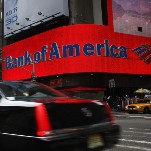Memoirs of a Valley Girl Malcontent
LatestOne August afternoon when I was fourteen, my friend and I somehow acquired enough cash to rent a white stretch limo for an afternoon to drive us around Calabasas, the affluent San Fernando Valley suburb that spawned and still comfortably hosts the Kardashians. A few years after our impromptu joyride, the “Bling Ring” teenagers would sneak back to their parents’ Calabasas homes after stealing millions of dollars worth of high-end stuff from the unlocked estates of Us Weekly favorites like Lindsay Lohan and Paris Hilton. That afternoon, all I knew about Calabasas was that it looked even more antiseptic from behind tinted glass. Not that I was really in a contemplative mood.
The details are hazy — I can’t recall what inspired us to rent a limo or how we paid for it, just that it was neither my idea nor money — but I remember slipping into the long, slick car around the corner from my friend’s house in a shabbier area of the Valley and driving twenty minutes to pick up another girl at Calabasas High School. The two mocked me for slinking down into the cushions in case my mother happened to drive by and glimpse her daughter chilling in a stretch limo during rush hour traffic. They preened using the car’s various shiny surfaces as if we were about to arrive somewhere other than from whence we came. I slouched the entire time, terrified.
Nancy Jo Sales’ The Bling Ring (an extension of her 2010 Vanity Fair article “The Suspects Wore Louboutins”, which inspired the Sophia Coppola movie opening next month) will delight those who consider “true crime” novels and tabloids guilty pleasures, but a less commercially enterprising editor (or one with a sense of humor) might’ve titled it The Calabasas Spring. The teenagers ran glamorously amok during 2008-2009, just a few years before Occupy Wall Street. These bratty, comically entitled teens didn’t intend to be revolutionaries, but they still represent the inverse extreme of the movement that would rise soon after. Some young people are mobilized by class anxiety/resentment to protest that shit’s fucked up and bullshit. Others apparently become so desensitized by the programming that they want to step into the television.
I binge-read The Bling Ring on a recent flight from New York to Los Angeles. I was going home to visit my parents in Encino, the suburb nestled between Calabasas and L.A. proper where I grew up. The book triggered traumatizing Valley Girl flashbacks, the sort that hit me on the rare occasions I find myself in a shopping mall surrounded by the brands I was peer-pressured into worshipping by my private school classmates during my adolescence. A friend of mine who was unimpressed by the book told me it’s naive to take a Vanity Fair writer at face value who argues that it “may be too easy to blame pop culture and the media for promoting the ‘value’ of fame,” that “movies and TV shows and popular music are often more of a reflection than an engine of cultural trends.” And sure, it’s less than radical to connect a growing national obsession with fame with a growing national obsession with wealth. But Sales’ overarching point — or, at least, the one that resonated most for me — is that the Bling Ring kids craved acknowledgment and acceptance more than wealth or fame; they wanted to feel famous because they wanted to feel rich because they wanted to feel loved.
Maybe I’m projecting. I, too, was a dissatisfied Valley Girl who grew up coveting Juicy Couture velour tracksuits instead of questioning their exorbitant price (and dubious aesthetic value) because I hoped the right brands would lead to solidarity. No, I wouldn’t have stolen Lindsay’s custom-made black mink coat. I wasn’t that brave. When all the trappings of fame are just a few freeway stops away, going out and trying to grab some for yourself seems somewhat reasonable, if not exactly laudable. It seems like a solution, anyway.
When the media first got tipped off to the Bling Ring, “everybody wanted them to be like kids on Gossip Girl,” Sales writes. But she found that “the kids weren’t as rich as everyone seemed to want to believe… it seemed they lived more like typical teenagers. They were better off than many kids, at the dawning of the great recession; but they didn’t appear to be wealthy in the way of the new elite class that had been engaging in the regulated accumulation of capital for the better part of three decades. They weren’t as rich as other people in Calabasas, or their victims, either. Which made them wannabes.”
-

-

-

-

-

-

-

-

-

-

-

-

-

-

-

-

-

-

-

-

-

-

-

-

-

-

-

-

-

-

-

-

-

-

-

-

-

-

-

-








































